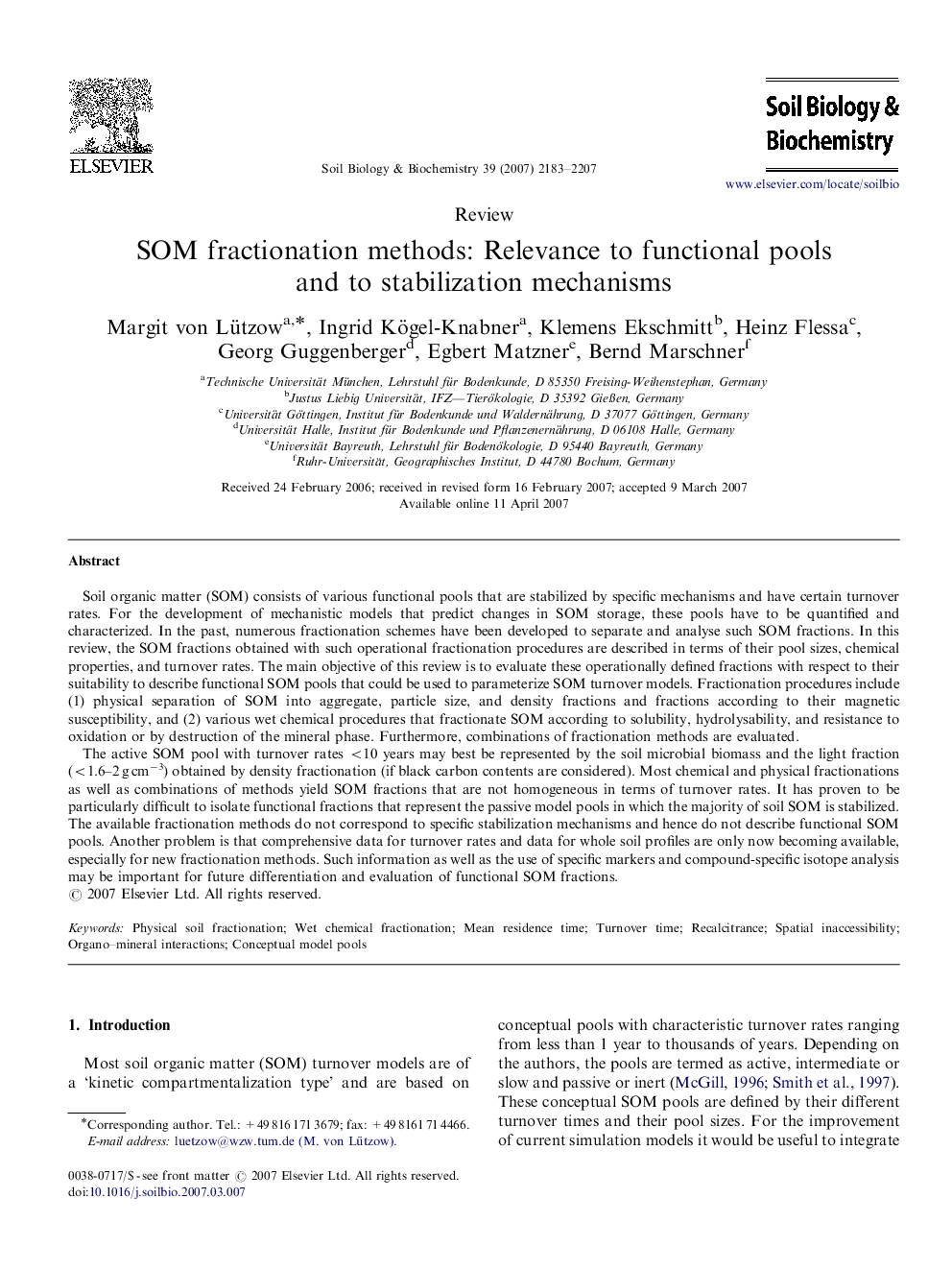| کد مقاله | کد نشریه | سال انتشار | مقاله انگلیسی | نسخه تمام متن |
|---|---|---|---|---|
| 2026177 | 1070022 | 2007 | 25 صفحه PDF | دانلود رایگان |

Soil organic matter (SOM) consists of various functional pools that are stabilized by specific mechanisms and have certain turnover rates. For the development of mechanistic models that predict changes in SOM storage, these pools have to be quantified and characterized. In the past, numerous fractionation schemes have been developed to separate and analyse such SOM fractions. In this review, the SOM fractions obtained with such operational fractionation procedures are described in terms of their pool sizes, chemical properties, and turnover rates. The main objective of this review is to evaluate these operationally defined fractions with respect to their suitability to describe functional SOM pools that could be used to parameterize SOM turnover models. Fractionation procedures include (1) physical separation of SOM into aggregate, particle size, and density fractions and fractions according to their magnetic susceptibility, and (2) various wet chemical procedures that fractionate SOM according to solubility, hydrolysability, and resistance to oxidation or by destruction of the mineral phase. Furthermore, combinations of fractionation methods are evaluated.The active SOM pool with turnover rates <10 years may best be represented by the soil microbial biomass and the light fraction (<1.6–2 g cm−3) obtained by density fractionation (if black carbon contents are considered). Most chemical and physical fractionations as well as combinations of methods yield SOM fractions that are not homogeneous in terms of turnover rates. It has proven to be particularly difficult to isolate functional fractions that represent the passive model pools in which the majority of soil SOM is stabilized. The available fractionation methods do not correspond to specific stabilization mechanisms and hence do not describe functional SOM pools. Another problem is that comprehensive data for turnover rates and data for whole soil profiles are only now becoming available, especially for new fractionation methods. Such information as well as the use of specific markers and compound-specific isotope analysis may be important for future differentiation and evaluation of functional SOM fractions.
Journal: Soil Biology and Biochemistry - Volume 39, Issue 9, September 2007, Pages 2183–2207